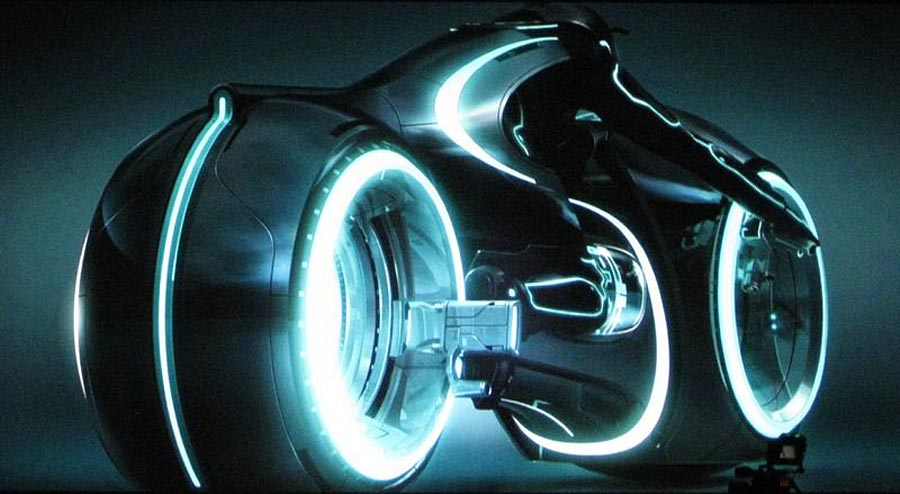Greetings user, it has been a while. Welcome back to the world of TRON
 http://www.filmofilia.com/wp-content/uploads/2009/09/tron_legacy-535x535.jpg
http://www.filmofilia.com/wp-content/uploads/2009/09/tron_legacy-535x535.jpgLet me start by saying I am in no way tied to Disney. My shameless promotion of this film is purely as a fan. I am also a motorcycle rider and the TRON cycle below just makes me giddy with glee when I see it in action.
 http://www.filmofilia.com/wp-content/uploads/2009/07/tron_legacy-2.jpg
http://www.filmofilia.com/wp-content/uploads/2009/07/tron_legacy-2.jpgIf you like, please click the YouTube clip below and enjoy some of the musical stylings of Daft Punk while you read my blog post.
People like to trash talk Disney for being one of those studios that are more about cranking out generic art for the sake of more market share then making something that can truly speak to our dreams. Usually I am also one of those people, but in this case I'll make an exception.
 http://cache.gawkerassets.com/assets/images/9/2010/02/tron_legacy.jpg
http://cache.gawkerassets.com/assets/images/9/2010/02/tron_legacy.jpgI loved the original TRON and this new one looks like it will be the coolest one yet. As an DAI interdisciplinary major, I find many aspects of industrial design of interest. This film incorporates all of the Dondis elements of dot, line, shape, direction, tone, color, texture, scale, dimension, and movement. Film and graphics provide the biggest range of implementation of these elements. As a designer, having the ability to play with all of those different tools is the ultimate in creative expressiveness.
 http://thefilmstage.com/wp-content/uploads/2010/04/tron_legacy2.jpg
http://thefilmstage.com/wp-content/uploads/2010/04/tron_legacy2.jpgThis frame above I think is a good example of dimension, depth, and space. The cables and rails of the suspention bridge converge toward the vanishing point on the horizon to give a sense of linear perspective. The the man in relation to the size of this large bridge uses the visual cue of relative size to make him small and the bridge seem big. His relation to the horizon use the visual cue of relative height to make him appear closer.

http://www.screenhead.com/wp-content/uploads/2010/08/TRON_Billboard.jpg
The picture above I think would make a good Avatar for Jane.
If you are interested, you can find out more at:
The picture above I think would make a good Avatar for Jane.
If you are interested, you can find out more at:







